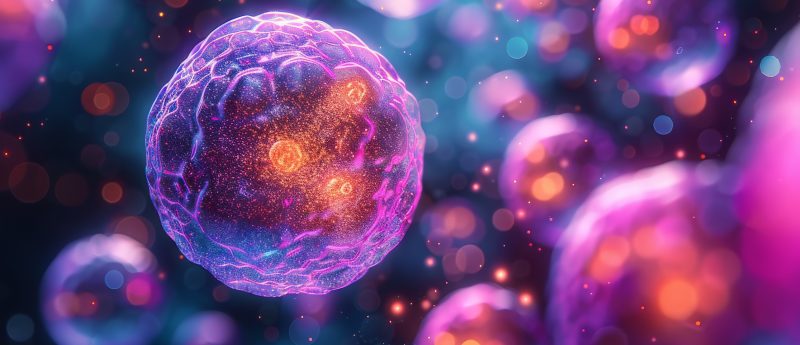Selected imaging publications from the National Research Resource for IMS

In this latest installment of our column from the Mass Spectrometry Research Center at Vanderbilt University, Danielle Gutierrez reviews a selection of publications on the applications, advancements and accomplishments of MALDI IMS.
MALDI imaging mass spectrometry is a technology spawning interests that span from analytical and instrumental performance to clinical applications and has been applied to a plethora tissue types. Accordingly, over 2000 peer-reviewed manuscripts have been published regarding the molecular imaging of tissues by MALDI mass spectrometry since its conceptualization in the late 1990s. A short selection of publications and reviews relating to accomplishments, clinical applications, and technological advancements is presented below.
Historical accomplishments
An important publication by Caprioli et al., in 1997, is a landmark paper that demonstrated the molecular imaging of tissue sections using MALDI MS [1]. It established that peptides and proteins could be desorbed and analyzed by MALDI MS directly from tissue while maintaining the native spatial localization of these analytes. The manuscript details two methods for acquiring these molecular images: direct tissue analysis; and tissue blots that capture molecules on a target surface (e.g., a C18-coated target) [1]. The first method, has since become the standard in the field. The first protein and peptide images captured were from rat pancreas, rat pituitary and human mucosa cells. This work also indicated the importance of sample preparation in maintaining spatial localization and a high signal-to-noise ratio. By 1999, the image acquisition process had been automated, reducing the data acquisition time by at least 60-fold and facilitating the adoption of IMS as a relevant imaging tool [2,3].
Advancements in IMS technology
Over the past decades, major advancements have been made in IMS technology. The list of instruments commonly used to acquire MALDI images has grown extensively and now includes ion traps, Q-TOFs, Orbitraps and Fourier transform ion cyclotron resonance (FTICR) mass spectrometers. Each of these instruments provides clear advantages and expands the list of biological questions that can be answered by MALDI IMS. A recent publication demonstrates the advantages of using ultra-high speed TOF and mass spectrometers of high resolving power for protein imaging [4]. In these experiments, TOF data were acquired in the range of 1100–25,000 Da within the time frame of 1.5 h. Final images were greater than 140,000 pixels, representing a rate of over 25 pixels/s and an almost tenfold increase in the efficiency of data acquisition (typically, TOF MS instruments acquire data at ~3 pixels/s). Furthermore, these experiments demonstrate the value of FTICR MS for protein imaging, namely high resolving power and mass accuracy (<5 ppm) for the identification of proteins and their modified forms [4].
Image analysis capabilities have greatly progressed. For example, image fusion was recently demonstrated [5]. In this process, two images from different imaging modalities (e.g., MALDI IMS and microscopy) are mathematically combined to produce an image that surpasses images from either modality alone. As an example, MALDI IMS provides molecular information, but is generally acquired at a lower spatial resolution relative to H&E. Conversely, H&E provides a high spatial resolution but lacks molecular information. In this example, image fusion provides the means to render the MALDI IMS image at higher spatial resolutions than acquired in the original experiment by using data from the H&E image, creating a predicted molecular image with high spatial resolution. Image fusion can also be used to predict molecular signatures in unanalyzed tissue regions using IMS data from a small area of the tissue and an image from an additional platform (e.g., H&E or MS images). In this way, image fusion can be used to acquire data from large tissue regions at lower initial spatial resolution or target regions of interest in an informed manner, improving the efficiency of data acquisition and the utility of the data.
Clinical applications
Ultimately, a toolbox of technologies will provide the best foundation for improving diagnostic, prognostic, and therapeutic capabilities. MALDI IMS produces highly specific chemical and molecular images without relying on pre-determined targets or labels – an advantage that is distinct from other imaging tools. In 2003, a publication demonstrated, for the first time, the capability of MALDI IMS to accurately stage disease in non-small-cell lung cancer samples [6]. Over the past 13 years, this work has been referenced in by over 400 publications. As an example of the diagnostic application of IMS to cancer, a recent publication addressed malignant melanoma and demonstrated the potential of MALDI IMS as a clinical tool for improved patient outcomes [7].
A review of IMS
One of the most comprehensive reviews to date on the topic of imaging mass spectrometry was written by Norris et al. in 2013 [8]. It covers extensively the topics of IMS modalities (imaging and histology-directed), sample preparation, matrix application, instrumentation, data acquisition and analysis, and biomedical applications. The sample preparation section discusses the typical subjects of sectioning and washing, as well as less common topics ranging from tissue collection and storage to analyte derivatization. Additionally, this review provides details on the capabilities of various IMS instrument platforms and how to consider the best instrument for the biological questions of a project. The data analysis section discusses available IMS software packages and 3D imaging. Finally, this review concludes with a review of IMS applications to eye physiology, cancer, pharmacology and neuroscience.
The articles presented here mostly demonstrate work done by or associated with the National Research Resource for Imaging Mass Spectrometry and align with its mission to advance IMS technology as a valuable tool that drives the molecular assessment and understanding of disease states. Over 2000 publications represent the field of MALDI imaging mass spectrometry, and additional manuscripts to those discussed here have made or will make major impacts on the utilization of IMS in both biological and clinical research.
References
- Caprioli RM, Farmer TB, Gile J. Molecular imaging of biological samples: localization of peptides and proteins using MALDI-TOF MS. Anal. Chem. 69(23), 4751–4760 (1997).
- Stoeckli M, Farmer TB, Caprioli RM. Automated mass spectrometry imaging with a matrix-assisted laser desorption ionization time-of-flight instrument. J. Am. Soc. Mass Spectrom. 10(1), 67–71 (1999).
- Stoeckli M, Chaurand P, Hallahan DE, Caprioli RM. Imaging mass spectrometry: a new technology for the analysis of protein expression in mammalian tissues. Nat. Med. 7(4), 493–496 (2001).
- Spraggins JM, Rizzo DG, Moore JL, Noto MJ, Skaar EP, Caprioli RM. Next-generation technologies for spatial proteomics: integrating ultra-high speed MALDI-TOF and high mass resolution MALDI FTICR imaging mass spectrometry for protein analysis. Proteomics 16(11–12), 1678–1689 (2016).
- Van de Plas R, Yang J, Spraggins J, Caprioli RM. Image fusion of mass spectrometry and microscopy: a multimodality paradigm for molecular tissue mapping. Nat. Methods 12(4), 366–372 (2015).
- Yanagisawa K, Shyr Y, Xu BJ et al. Proteomic patterns of tumour subsets in non-small-cell lung cancer. Lancet 362(9382), 433–439 (2003).
- Alomari AK, Glusac EJ, Choi J et al. Congenital nevi versus metastatic melanoma in a newborn to a mother with malignant melanoma – diagnosis supported by sex chromosome analysis and Imaging Mass Spectrometry. J. Cutan. Pathol. 42(10), 757–764 (2015).
- Norris JL, Caprioli RM. Analysis of tissue specimens by matrix-assisted laser desorption/ionization imaging mass spectrometry in biological and clinical research. Chem. Rev. 113(4), 2309–2342 (2013).




